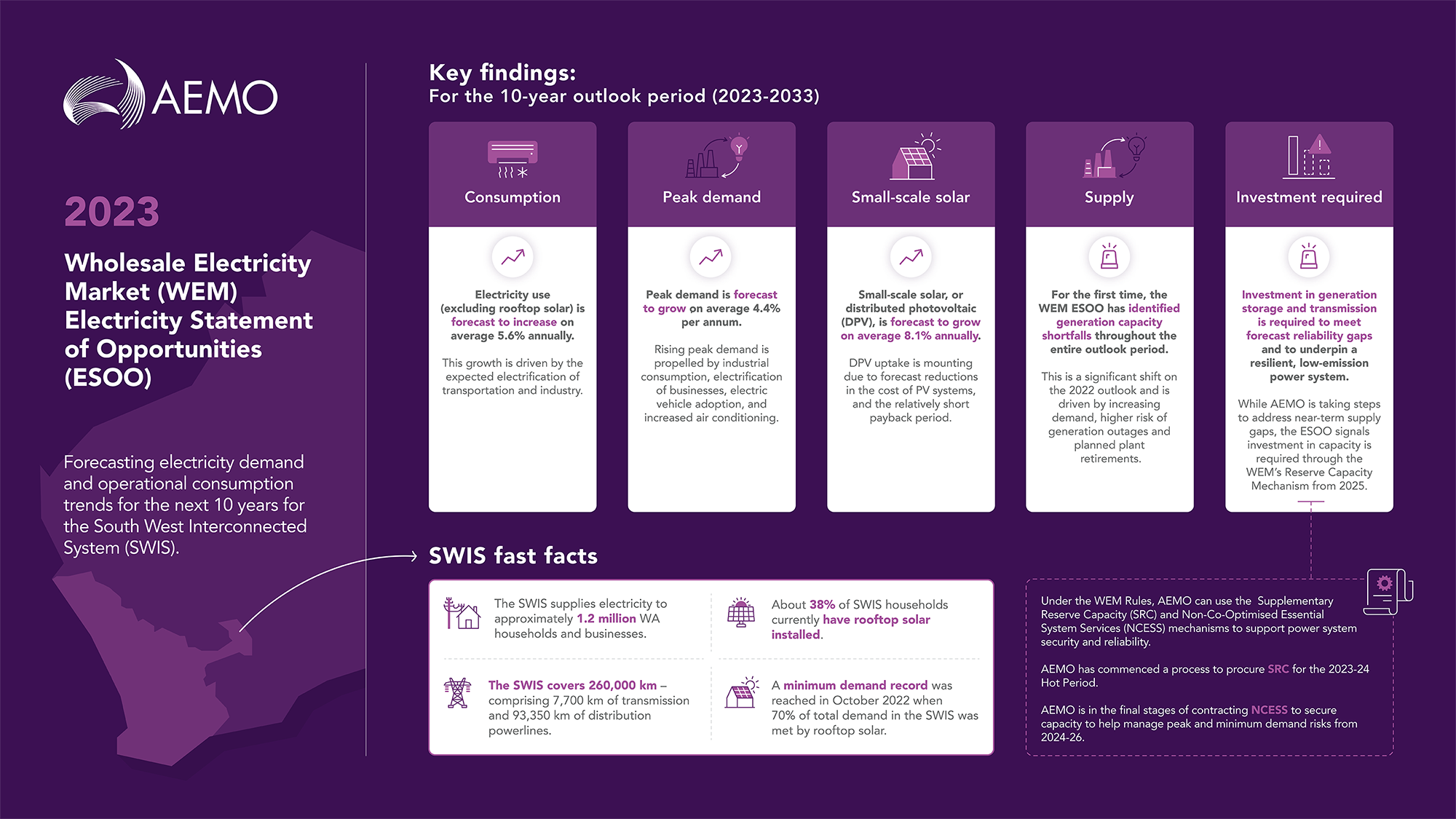The Australian Energy Market Operator’s 2023 Wholesale Electricity Market (WEM) Electricity Statement of Opportunities (ESOO) report highlights the need for significant and sustained investment in generation, storage and transmission to meet reliability standards in the South West Interconnected System (SWIS).
Looking at the upcoming decade, the report forecasts an increase in electricity use and peak demand levels, and factors in the changing risks to generation availability through this stage of the energy transition. The report also expects 1,366 megawatts (MW) of coal-fired generation capacity will be retired within the next decade.
Considering existing and committed capacity supply, AEMO forecasts the need for additional capacity throughout the outlook period, including a shortfall of 945 MW in 2025-26 and around 4,000 MW by 2032-33.
This is a significant shift compared to the 2022 WEM ESOO outlook, where the additional capacity requirement was expected to begin in 2025-26 and reach 303 MW by 2031-32.
AEMO Executive General Manager Western Australia and Strategy, Kate Ryan, said: “The rapid energy transition is now fuelling very strong forecast growth in electricity demand. At the same time, we’re transitioning to new, lower-emissions sources of supply and managing the phase out of coal-fired generation.”
“This year’s reliability outlook highlights the need for significant and sustained investment in additional capacity, fast-tracking the pipeline of generation, storage and demand-side projects, along with investment in transmission infrastructure, to meet reliability standards.
“Increased capacity investment is needed for a robust and resilient power system capable of meeting future demand and facilitating the transition to a cleaner and more sustainable energy future,” she added.
In the near-term, AEMO has commenced the procurement of additional capacity to address reliability gaps expected for 2023-24, using the Supplementary Reserve Capacity mechanism. AEMO is also in the process of procuring additional services for 2024-2026 through the Non-Co-Optimised Essential System Services (NCESS) mechanism.
AEMO estimates that 4,598 MW of generation is expected to be available to meet the Reserve Capacity Requirement (RCR) of 5,543 MW, calculated for the capacity year commencing 1 October 2025.
A total of 1,348 MW of new projects are considered as ‘probable’ for coming online in 2025-26, including the 2024-26 Peak Demand NCESS projects under contract negotiation with AEMO.
Commitment of much of this probable capacity is needed to close the capacity investment gap in 2025-26.
“Where there’s a supply-demand shortfall, we have mechanisms available to procure additional capacity in the near term, as we did last year,” Ms Ryan said.
“However, it’s critical that the pipeline of energy projects is developed in a timely way to alleviate forecast reliability challenges and support the ongoing energy transition,” she added.
The requirement for capacity investment were similarly reflected in the Western Australian Government’s SWIS Demand Assessment, which identified the need for investment in renewables, with firming technology, such as batteries and gas, and transmission infrastructure across the next 20-years.
ENDS







